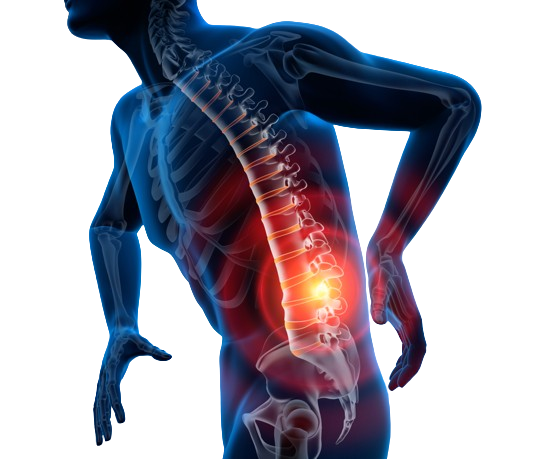Spinal Injuries Expert in Perumbakkam
Your Trusted Partner in Spinal Injuries
Spinal cord injuries involve damage to your spinal cord. This bundle of nerve fibers links your brain to nerves throughout your body. We are here to provide you with top-notch care and guidance to tackle your problems.

Understanding Spinal Injuries
What are spinal cord Injuries?
A spinal cord injury (SCI) happens when there’s damage to your spinal cord, a thick bundle of nerve fibers that allows your brain to communicate with other nerves almost everywhere else in your body. These injuries can range from minor and manageable to severe and permanent.
The spinal cord is one of the two components of your central nervous system. Your nervous system is like a multilane expressway to and from your brain, the other component of the CNS. It has lanes for traffic leaving your brain and other lanes for traffic heading to your brain.
Your spinal cord connects to your spinal nerves, which are like on- and off-ramps that connect to peripheral nerves that branch out everywhere else in your body. Nerve signals are the cars that travel this expressway and use those on- and off-ramps.
Spinal cord injuries are like closures that affect the lanes in this expressway. But unlike a real-life expressway, the spinal cord has no detours. The traffic that uses the closed lanes can’t reach where it’s going. If the damage is severe enough, the closure might be permanent. That’s what causes paralysis and other severe SCI injury symptoms.

Symptoms of Spinal Injuries:
- Pain
- Numbness
- Tingling
- Weakness
- Paralysis
- Spasticity
- Heart rate disruptions
- Blood pressure disruptions,
- Body temperature disruptions
Types of this condition
There are two ways that experts organize the types of spinal cord injuries: By the way the injury affects your spinal cord and where in your spinal cord the injury happens. An SCI can interrupt nerve signal traffic going to and coming from anywhere below where it happens.
By location
- Cervical spine: This section is in your neck. It goes from the bottom of your skull to about the same level as your shoulders.
- Thoracic spine: This section stretches from your upper back to just below your navel (belly button).
- Lumbar spine: This section is in your lower back. It extends about to the top of where your buttocks meet, but your spinal cord ends a couple of inches above that.
- Sacral spine: This section is in your back. It contains nerve roots below your butt to your tailbone.
What can cause a spinal Cord Injury?
Spinal cord injuries can happen for many reasons. Possible causes include (but aren’t limited to):
- Motor vehicle crashes: These are the most common cause. They make up more than 37% of all SCIs.
- Falls: They make up about 31% of all SCIs.
- Violence-related injuries: This includes penetrating injuries from bullets or sharp objects like knives. They make up about 15% of all SCIs.
- Sports-related injuries: These account for about 8% of SCIs. Diving is the most common sports-related spinal cord injury.
How are Spinal Cord Injuries Diagnosed?
A healthcare provider can usually diagnose a spinal cord injury using multiple methods, including:
- A Physical Exam: Your provider does this to look for clues or evidence of the injury’s extent.
- A neurological Exam: Your provider will do this to test specific abilities of your nervous system. This involves seeing if you can move your limbs by testing your strength and checking your sensation and reflexes.
- Imaging scans: Examples include computed tomography and magnetic resonance imaging(MRI) scans. CT scans are faster and show your provider bone-related injuries or problems. MRI scans take longer but provide ultra-detailed images of bones, soft tissues, nerves, etc.
- Diagnostic tests: Examples of these include electromyography and nerve conduction tests. They measure electrical signals reaching your muscles, which can help locate nerve or spinal cord damage interfering with signals.
Frequently Asked Question on Spinal Injuries
A spinal injury refers to damage to the spinal cord, vertebrae, or surrounding tissues, resulting in a range of symptoms, including pain, numbness, and loss of motor function.
Common symptoms of spinal injuries include pain, numbness, tingling, muscle weakness, difficulty walking, and, in severe cases, loss of bladder or bowel control. If you experience these symptoms after an injury, seek medical attention promptly.
Treatment varies based on the type and severity of the injury. Stabilizing the spine, managing symptoms, and rehabilitation are common approaches. Surgery may be necessary in some cases.
Recovery varies for each individual and depends on the type and severity of the injury. Rehabilitation, including physical therapy, is essential for improving function and quality of life.
Surgery is not always required and depends on the type and severity of the injury. Conservative approaches such as bracing, physical therapy, and medications may be sufficient in some cases.
